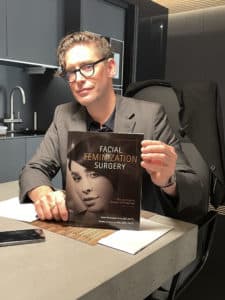What is Craniosynostosis?
Craniosynostosis occurs when one or more of the fibrous sutures (fibrous joints) in an infant’s skull prematurely fuses by turning into bone (ossification), inhibiting the ability of the skull to grow to normal size and proportion. This causes the growth pattern of the skull to change resulting in an abnormal head shape and abnormal facial features. Craniosynostosis can also result in increased intracranial pressure resulting in visual and sleep impairment, eating difficulties or an impairment of mental development and a reduction of IQ. Craniosynostosis occurs in 1-out-of-2,000 newborn babies and may be isolated, or it may occur in association with another syndrome. Benign cases usually involve only one cranial suture.
The most common of the non-syndromic sutures to fuse is the sagittal suture followed by the metopic suture, then the coronal suture, and then the lambdoid suture. There are many additional minor sutures in the base of the skull that are also prone to fusing at much lower incidence. Scaphocephaly is the most commonly found head shape problem resulting in a long narrow head. Metopic synostosis is another commonly found type of craniosynostosis. This type results in a ridge in the mid-line of the forehead and a rather aerodynamic v-shaped appearance when seen from above.

Read Our Book
The wait is over! Dr. Deschamps-Braly’s new book “Facial Feminization Surgery: The Journey to Gender Affirmation” is back and available now. This second edition covers the advances in facial feminization as well as helpful patient stories and is a great resource for FFS patients and their loved ones.
LEARN MOREWhat is the surgical treatment for Craniosynostosis?
The treatment for any and all of the benign non-syndromic craniosynostoses is to perform a procedure to reshape the skull and open the growth plates so that the shape and size of the skull is corrected. Additionally, there are new techniques including endoscopic and also less invasive surgeries that use springs to slowly correct the head shape over time that may be appropriate in carefully selected circumstances.

At what age should a child undergo Craniosynostosis surgery?
The age range in which we operate on craniosynostosis is debatable. Some surgeons operate at very young ages; however, there is often a need to re-operate on the child as they get older. If we wait too long, the head shape is more difficult to correct and some cognitive function may not be recoverable. There is evidence to support that surgically treating craniosynostosis improves intelligence, relative to cases where patients have not been operated on. Therefore, our preference is to operate on these children at 9-10 months of age or slightly earlier in some situations.
Read more about craniosynostosis on Wikipedia.
Dr. Deschamps-Braly, MD is a plastic surgeon at Children’s Hospital and Research Center Oakland. He collaborates with Dr. Peter Sun, MD a pediatric neurosurgeon at the hospital.
Schedule your consultation today.


